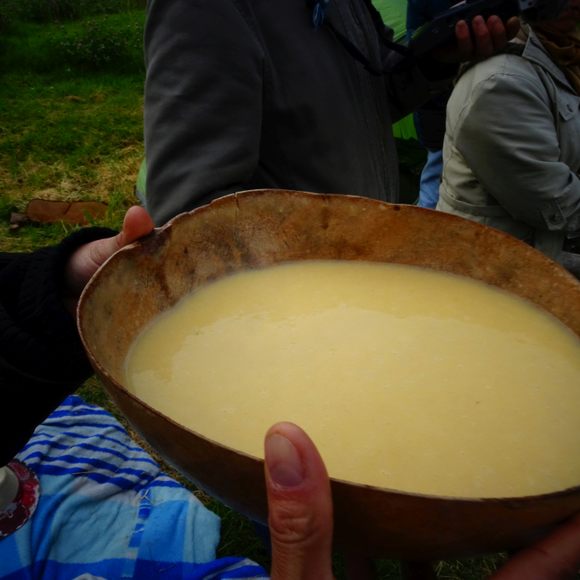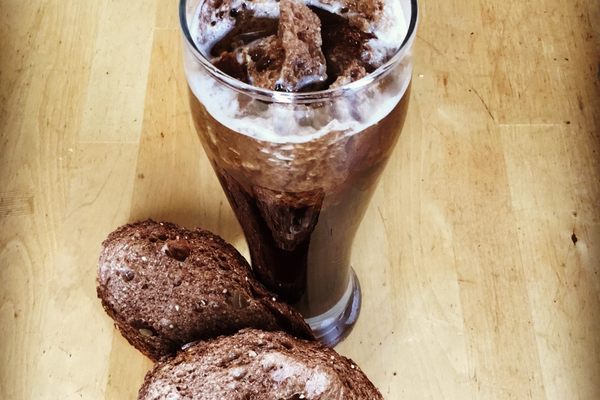Making chicha begins with chewing corn into a clump. The boozy concoction has been around since at least 3000 B.C., which is why the brewing process doesn’t require large tanks or a wine press. Everyone is born with the tools to make chicha—a pair of chompers that can break down maize or cassava for fermentation.
If this sounds unappetizing, consider that saliva enzymes help transform starch into dextrins and maltose—in other words, sugar. After you chew, exposure to bacteria or yeast in the air turns the corn or cassava into alcohol in as little as a few hours, and you can boil the final product to sterilize it. In the pre-Columbian era, chewing maize was a standard way to make it easier to work with. The first step of making arepas, the region’s staple corn cakes, involved chewing maize until it was soft enough to form into dough.
For millennia, chicha enjoyed an exalted status. But when the Spanish arrived in the 15th century, their distaste for the bitter, milky drink diminished its status from ceremonial offering and drink of status to working-class staple. Still, chicha—whose taste is compared to grainy apple cider vinegar—remained popular in Colombia. In the 1800s, hundreds of chicherias—in Bogotá alone—served as both bars and community spaces. They were part of daily, working-class life.
That culture disappeared after 1948, when a new Colombian law required fermented drinks to be industrially produced and packaged in glass containers. The law aimed squarely at chicha, which politicians blamed for the country’s social ills. Government advertisements blamed the drink for poor hygiene, violence, and chichismo, a pseudo-scientific disease supposedly worse than alcoholism. Chicha represented the past: It was made with spit, served communally, and linked to indigenous people who were stereotyped by politicians. The upper class increasingly drank beer, which was made by a German brewer in a gleaming factory. Beer represented progress, Europe, and modernization; the brewer’s advertisements showed babies drinking healthy beer above the words “No Mas Chicha.” Eventually, beer took over.
Chicha is now hard to find in Bogotá, but a nonalcoholic variation usually made from purple corn (maíz morado) and pineapple is common in Peru. Chicha is ubiquitious in Venezuela, too, although it’s sweet, rice-based, and nonalcoholic. You’re more likely to find alcoholic chicha in rural areas, in conditions closer resembling its original home.
Written By
 paulamejia
paulamejia
Sources
- expresodelcentro.wordpress.com/2009/05/14/la-chicha-prohibicion-vida-y-celebracion/#jp-carousel-632
- www.bogota.gov.co/ciudad/historia/la-chicha-la-bebida-de-los-dioses-se-traslad%C3%B3-la-cultura-bogotana
- onlinelibrary.wiley.com/doi/10.1111/1541-4337.12098/full
- www.jstor.org/stable/23645628
- www.extracrispy.com/food/1485/who-can-claim-the-arepa
- www.bogota.gov.co/ciudad/historia/la-chicha-la-bebida-de-los-dioses-se-traslad%C3%B3-la-cultura-bogotana
- www.eltiempo.com/archivo/documento/CMS-4123795















